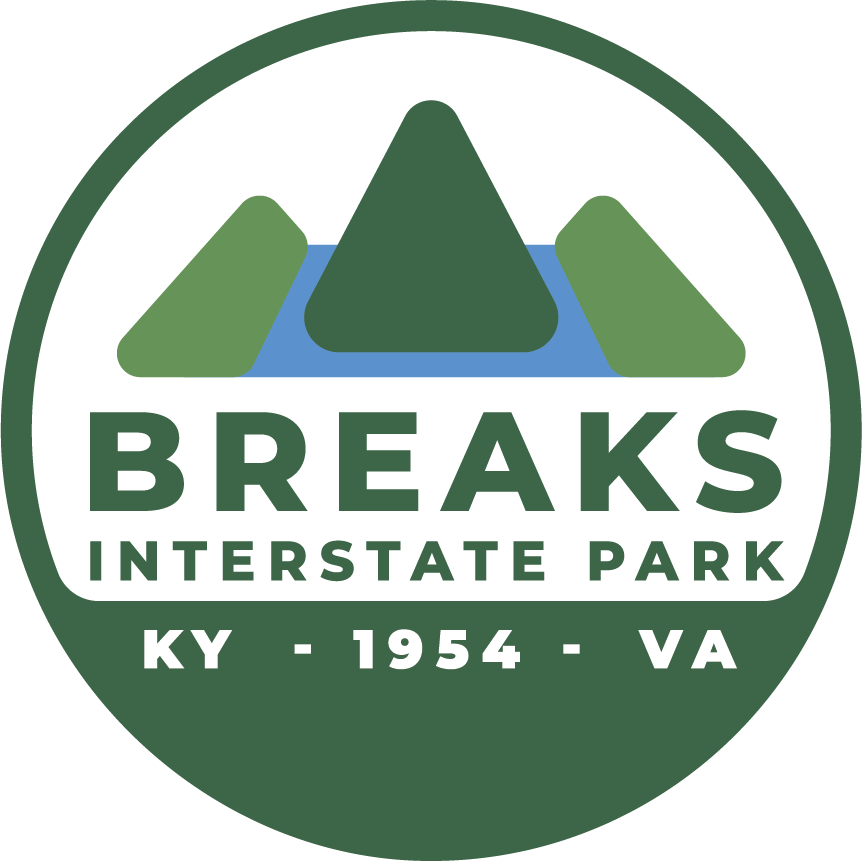The Benefits of Prescribed Fire
The Breaks Interstate Park has begun utilizing controlled burns as part of its wildlife and forest management program. In this article, Greg Estoll of the VA Dept. of Forestry, explains why prescribed fire is a beneficial tool for land managers.
How can prescribed fires be a good thing if wildland fires are bad? First, let’s define terms. Wildland fires are unplanned and not contained. As such, they pose a threat to people, property (houses, structures, etc.) and fields or forests. Prescribed fires are planned to take place during suitable weather conditions with fire breaks installed and appropriate personnel on site before using an ignition pattern designed to best achieve the burn objectives.
So, why is prescribed fire used in our mountain fields and woodlands? Many reasons. Fire reduces fuel, prepares sites for planting (grasses, forbs or tree seedlings), and can help meet specific forest management objectives (e.g., to aid oak tree regeneration). But, wildlife habitat improvement is probably the most common reason fire is put on the ground. In terms of habitat, we are looking at the big picture and multiple wildlife species here. While it is true that prescribed fire can negatively impact some species like ground egg laying Eastern whip-poor-wills if they are present (part-year residents) or ovenbirds or acadian flycatchers that like large patches of undisturbed forests, if we are interested in managing for a diversity of wildlife species then we also want to manage for a diversity of habitat types and stages of vegetative development. A side note, it is common to see deer or turkey within hours of completing a burn.
Fields can be burned to remove decadent vegetative material (thatch in many grass dominated areas). While the field will lose structure and cover for a short time, the re-growing vegetation will provide good forage and a more open structure (at the ground level) important for many birds as a travel corridor as they seek food and hiding places. Depending on burn parameters, the site can tend toward or away from grass. If native warm season grasses (switchgrass, big bluestem, Indian grass, etc.) are present, then burning is often utilized to re-stimulate the grasses. In other cases, herbaceous forbs are more desirable than grass and diversity of species is higher – plants and animals.
Fires in forests are prescribed for multiple wildlife related reasons mostly centered around increasing forage and browse. Burning leaves on the forest floor, as well as twigs and other vegetation, allows some sunlight to reach the ground level encouraging new vegetative growth. In many cases, there is still too much shade from small or large trees, so killing some trees can be valuable either using fire or other means. The trick is to try and get enough fire intensity to meet the objectives without damaging too many trees. Fortunately, heterogeneity across a site is a good thing. Lack of fire has led to increasing forest acres containing evergreen shrubs – mountain laurel (small leaves) and rhododendron (large leaves). While they are native and have some benefits, these shrubs limit or eliminate other vegetative growth due to heavy shading. When small to medium in size, these evergreen shrub species will burn (the waxy leaves pop and crackle!) thus allowing sunlight to reach the forest floor giving herbaceous species, as well as trees and other shrubs, a chance to grow.
Open forest understory with little food or cover due to a lack of sunlight reaching the forest floor.
Good “brushy” forest understory with adequate food and cover for wildlife….results from greater levels of sunlight penetrating the forest canopy.
One fire will provide some benefits, but multiple fires are usually required to meet stated objectives. That said, fire is not always good for trees and must be used prudently. Small diameter trees are susceptible to fire damage, so if those small trees are needed for a future mature forest, then there needs to a long period without fire until the trees are large enough to be considered fire resistant.
The Breaks Interstate Park has implemented a couple of prescribed burns in forest and field environments to provide better forage and browse for wildlife as well as enhance recreational aesthetics over time. This is just the beginning. Most burning at the Park will occur when few guests are present and only small sections of the thousands of acres available will be burned at any given time. If you see a section of the Park closed, please remember it is temporary and for your safety.
Submitted by Greg Estoll – Forester with Virginia Department of Forestry serving Buchanan, Dickenson and Tazewell County landowners with forest plans, recommendations, and implementation assistance including prescribed fire for forest management or wildlife habitat improvement.
2-19-2024



